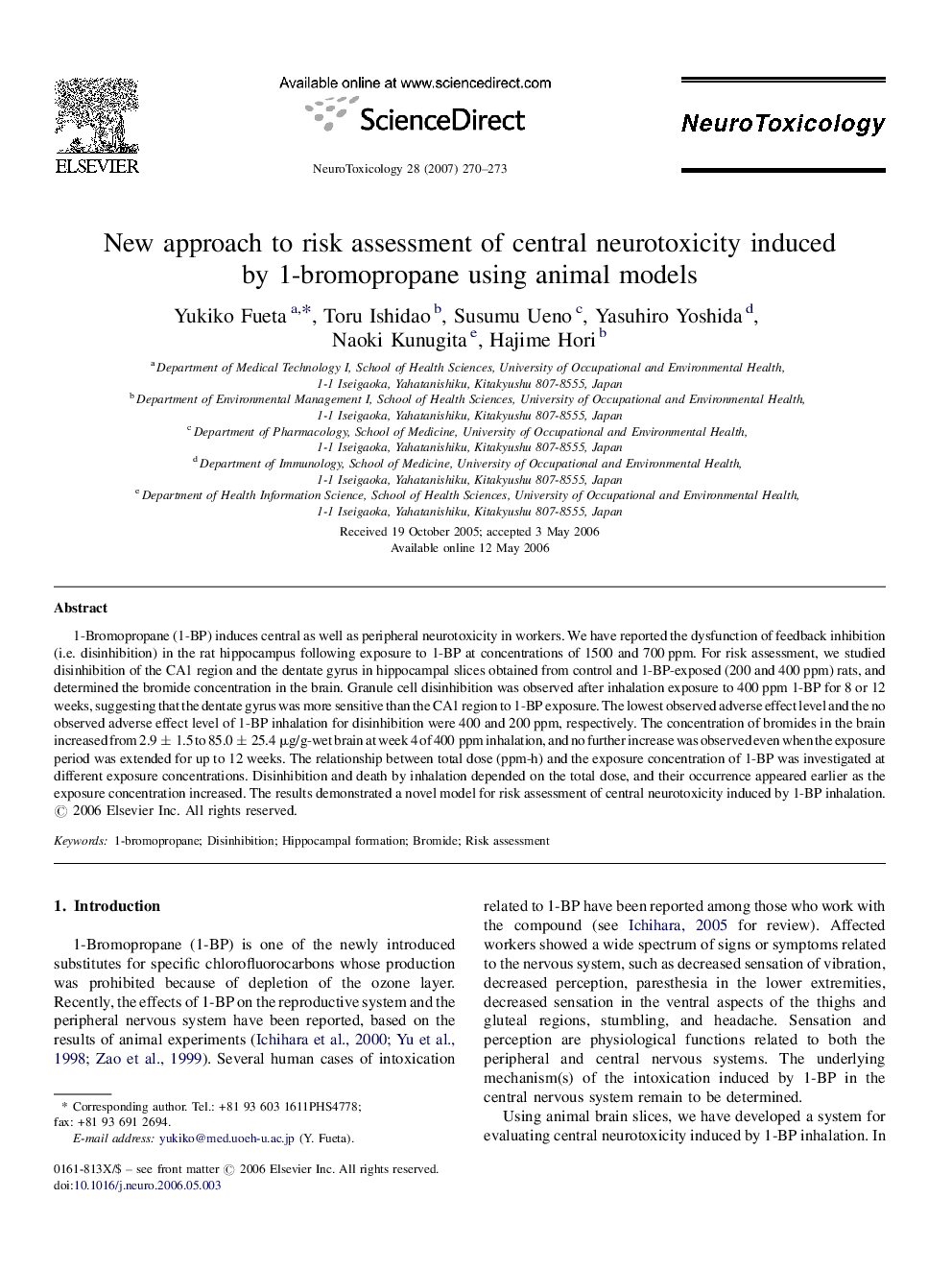| Article ID | Journal | Published Year | Pages | File Type |
|---|---|---|---|---|
| 2590724 | NeuroToxicology | 2007 | 4 Pages |
1-Bromopropane (1-BP) induces central as well as peripheral neurotoxicity in workers. We have reported the dysfunction of feedback inhibition (i.e. disinhibition) in the rat hippocampus following exposure to 1-BP at concentrations of 1500 and 700 ppm. For risk assessment, we studied disinhibition of the CA1 region and the dentate gyrus in hippocampal slices obtained from control and 1-BP-exposed (200 and 400 ppm) rats, and determined the bromide concentration in the brain. Granule cell disinhibition was observed after inhalation exposure to 400 ppm 1-BP for 8 or 12 weeks, suggesting that the dentate gyrus was more sensitive than the CA1 region to 1-BP exposure. The lowest observed adverse effect level and the no observed adverse effect level of 1-BP inhalation for disinhibition were 400 and 200 ppm, respectively. The concentration of bromides in the brain increased from 2.9 ± 1.5 to 85.0 ± 25.4 μg/g-wet brain at week 4 of 400 ppm inhalation, and no further increase was observed even when the exposure period was extended for up to 12 weeks. The relationship between total dose (ppm-h) and the exposure concentration of 1-BP was investigated at different exposure concentrations. Disinhibition and death by inhalation depended on the total dose, and their occurrence appeared earlier as the exposure concentration increased. The results demonstrated a novel model for risk assessment of central neurotoxicity induced by 1-BP inhalation.
